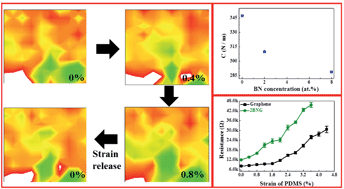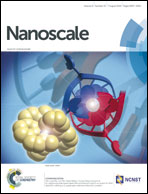Direct assessment of the mechanical modulus of graphene co-doped with low concentrations of boron–nitrogen by a non-contact approach†
Abstract
Boron and nitrogen co-doping has been shown to be an effective way to induce a band gap in graphene for electrical applications but only a few theoretical studies have been done to understand the elastic and mechanical properties of the modified graphene. Until now, no experimental assessment of the mechanical modulus of boron–nitrogen-doped graphene (BNG) has been reported in the literature. Here, we demonstrate a novel non-contact approach to determine the in-plane stiffness of BNG at low BN concentrations. The in-plane stiffness of BNG with 2 at% BN concentration was estimated to be about 309 N m−1, which is lower than that of pristine graphene, in good agreement with some theoretical studies. Moreover, we correlated the conductivity of BNG with induced strain and found the BNG to be more sensitive than pristine graphene in response to externally applied strain. This result indicates that BNG is a more suitable material than graphene for strain sensor applications.


 Please wait while we load your content...
Please wait while we load your content...